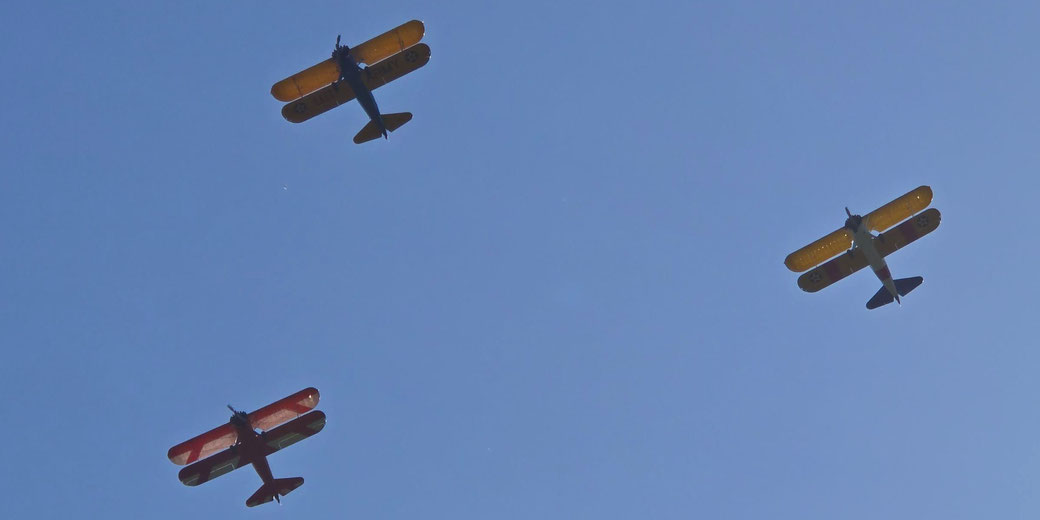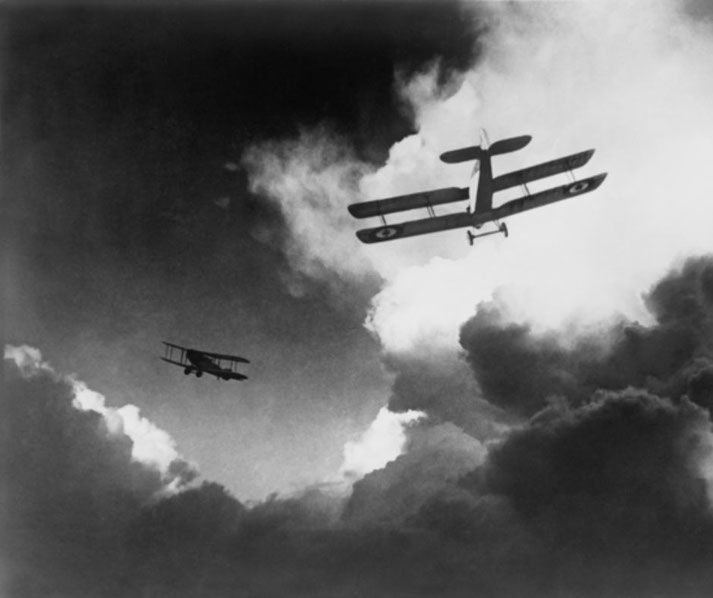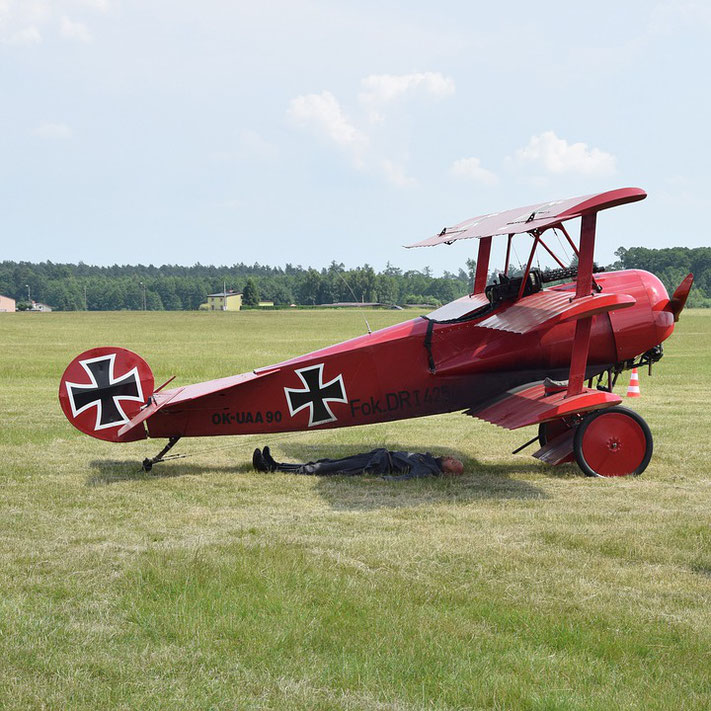The chaotic and deadly nature of WWI air warfare

At the beginning of World War One, no military in the world had an aircraft division. However, by the end of the war, planes and other flying craft became central to achieving victory.
Powered flight had only been achieved in 1903 with the Wright brothers. However, there had been no effective development of militarised planes by the time war began.
That all changed rapidly after the conflict broke out in 1914.
Fighter aircraft
In 1914, at the start of WWI, European armies did not have a strategy for the use of planes.
Where airplanes were used, it was only for observation and reconnaissance.
Reconnaissance aircraft provided essential intelligence on enemy troop movements and positions.
A significant change occurred in 1915, a Dutch aircraft maker employed by Germany, called Anthony Fokker, developed a mechanism that allowed a machinegun to shoot through a propeller without causing damage to the plane.
This created a new kind of aircraft for the first time, an offensive machine we now called a 'fighter plane'.
Germany paid for as many of these fighter planes as possible, which gave them control in the skies for the rest of 1915.
Even though the Royal Flying Corps (Britain) and the Aéronautique Militaire (France) had been established earlier in 1912 and 1910 respectively, 1916 saw significant expansion and organization of these forces to counter the German threat.
The new RFC squadrons underwent dedicated training on how to work together to defeat German pilots.
These changes paid off and the Allies were able to dominate the skies for the rest of the year.
However, the Germans regained control at the start of 1917 when they reorganized their air force and adopted more modern fighter planes.
The month of April 1917 is known as ‘Bloody April’, due to the increased number of kills the German aircraft achieved.
It is estimated that the British air force had four times more casualties than the Germans during this time.

Bomber aircraft
Fighter aircraft were not the only new designs during the First World War. Larger machines were developed to carry bombs over enemy trenches and towns to cause damage.
In 1915, the Germans bombed cities in Britain and France by using Zeppelin airships.
Then, in 1917 and 1918, larger planes called Gothas flew over trench systems, factories and supply bases, where they dropped bombs in the hope of causing as much damage as possible to the Allied war effort.
Britain and France developed similar bombing craft and the attacks on enemy ports and factories became commonplace on both sides.
Unfortunately, the bombing of infrastructure and towns resulted in increased civilian deaths.
There was a genuine fear of 'death from above' during the conflict, and for the first time, civilians did not feel safe just because they were not on the battlefield.
Rockstar pilots
Both Britain and Germany promoted their air forces among their own civilians, not only to raise the morale of their populations, but also to celebrate the achievements of their pilots.
Being a pilot in World War One was dangerous, with many people dying in only their first few missions.
However, as pilots gained more experience in the air, the more deadly, and the more famous, they became.
Once a fighter pilot won at least five aerial combats, they were known as ‘aces’.
Being an ace made them a superstar at home, and their exploits were printed in the daily papers.
In comparison to the men who served in the army on the ground, which were seen as the 'nameless masses', ace fighter pilots were seen as the 'knights of the skies' and were portrayed as young, clean-cut and chivalrous.
The Red Baron
In the early days of World War I, a German pilot named Manfred von Richthofen was dubbed the "Red Baron" due to the bright red paint job on his plane.
He quickly became one of the most feared pilots in the skies and holds the record for being the highest-scoring ace of all time.
Von Richthofen was born in 1892 into a noble family in Breslau, Germany (now Wrocław, Poland).
His father was an army officer who encouraged his son to follow in his footsteps.
He entered the Prussian cadet corps (military school) when he was 11 years old.
When World War I broke out, von Richthofen initially served as a cavalry officer on the eastern front.
He submitted a formal request to join the German Air Service (Luftstreitkräfte) in 1915, which he was granted.
He began his flying career as an observer/reconnaissance pilot, but soon switched to fighter planes.
His first encounter was on September 15, 1915, with a British plane, but the combat ended without either aircraft being damaged.
On July 17, 1916, he shot down his first plane. Over the next two years, he would rack up an astounding 80 more victories.
In April 1917 alone, he shot down 21 enemy planes!
During his time in the German Air Service, von Richthofen flew a variety of different aircraft.
But his most famous plane was undoubtedly his red Fokker DR.I triplane.
On April 21, 1918, von Richthofen's luck ran out when he was shot down and killed by Australian gunner Sergeant Cedric Popkin, although accounts vary on who actually caused his death.
He was just 26 years old. Though he was gone, von Richthofen's legend lived on. He remains one of the most iconic figures of World War I to this day.

Further reading
What do you need help with?
Download ready-to-use digital learning resources
Copyright © History Skills 2014-2025.
Contact via email
With the exception of links to external sites, some historical sources and extracts from specific publications, all content on this website is copyrighted by History Skills. This content may not be copied, republished or redistributed without written permission from the website creator. Please use the Contact page to obtain relevant permission.





